It’s something of a mystery that Uruguay remained an undiscovered destination for so long, at least for most Americans and Europeans. For years, Argentineans have been heading there en masse, hopping across the river to Colonia and Carmelo for a weekend break and then heading to Punta del Este and its Atlantic coastline during the long summer holidays.
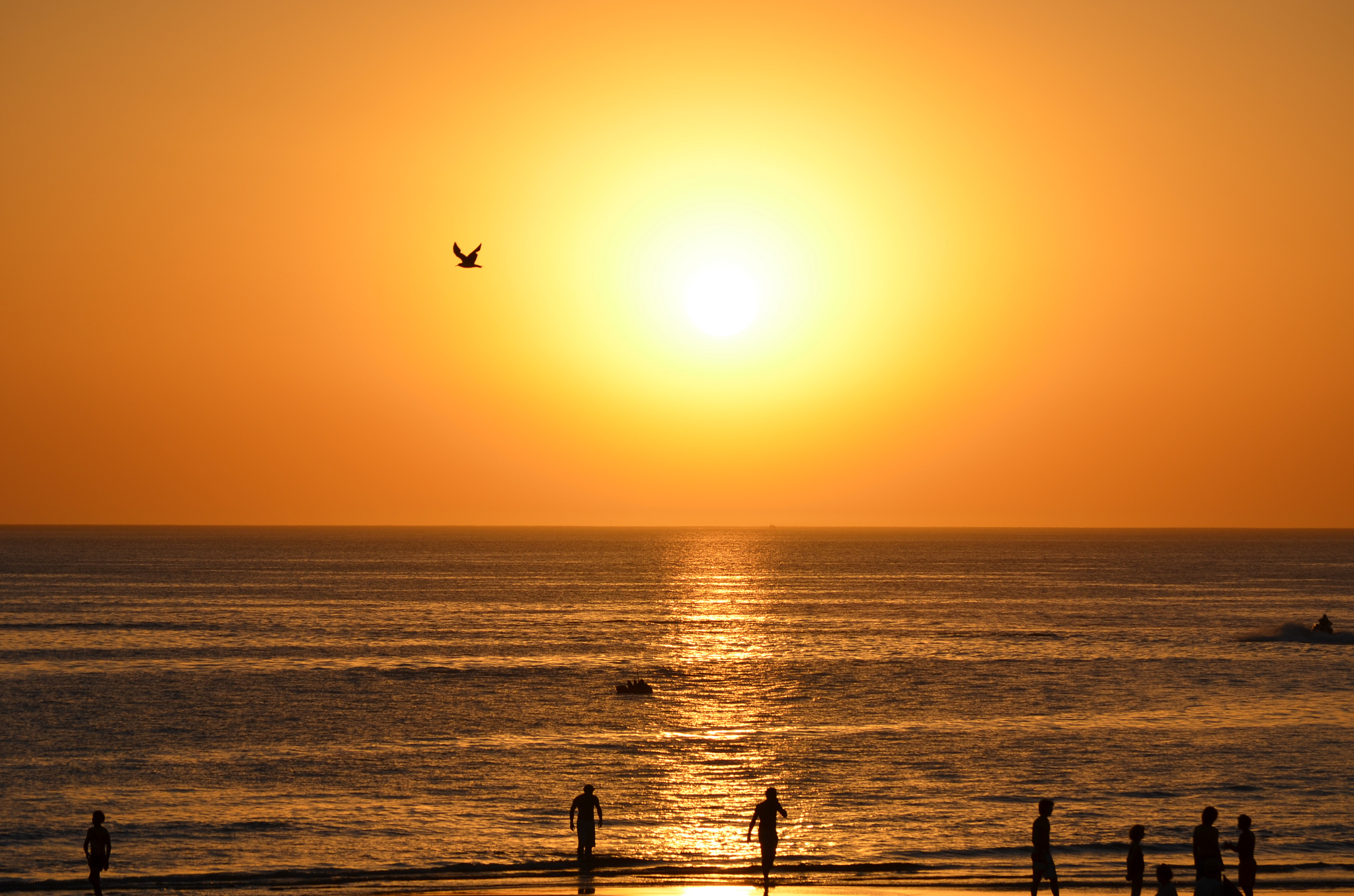
A stunning scene on the Uruguayan coast (Photo: Grace Artagaveytia via Flickr)
Depending on your taste – and in part the size of your wallet – there’s something for everyone on the Uruguayan Coast. In amid Colonia del Sacramento’s cobbled-streets, you’ll find history on every corner; in Carmelo, riverside peace and boutique vineyards. Further up the coast, Punta del Este has the nightlife to rival Ibiza’s while Jose Ignacio offers sophistication and restaurants to match The Hamptons. Not forgotting the coastline of Rocha with its wild and beautiful beaches.
As you’ll see below, we’ve done our best to cherry pick beach towns with differing vibes and topography. But they all share two things in common: oodles of charm and jaw-dropping sunsets.

A rickety car in the town of Carmelo on the Río de la Plata in western Uruguay (Photo: Jose ü Mariüa Peürez Nunâez via Flickr)
Carmelo
Just 77km along the coast from charming Colonia, the sleepy town of Carmelo is situated where el Rio de Uruguay widens into el Rio de la Plata. Dating back to the turn of the 19th century, Carmelo is made up of cobble-stoned streets lined with single-storey houses and a busy port shared by sailing and fishing boats.
Carmelo is also situated in the heart of Uruguay’s little-known wine country. Uruguay specialises in Tannat, a punchy, dark red that perfectly complements its grass-grazed beef. Among the many wineries receiving visitors by appointment, the country’s oldest – the Cerros de San Juan – is probably the best. Founded in 1854, it still stores its wine in a century-old stone warehouse.
If you’re looking to unwind, south of the river is Arroyo de las Vacas lies Playa Seré, a quiet, child-friendly beach backed by large trees, where you’ll find a campsite and public barbecues.
Where to Stay
Nestled in a pine forest outside Carmelo is the enormous Four Seasons Carmelo Resort . It’s an expansive complex, with 44 zen-inspired bungalows, a huge pool, spa facilities and even its own golf course. It’s the closest thing to Mar-a-Lago on the Rio de la Plata. For something less flashy, there’s the Hotel Casino Carmelo in the centre of town. It’s a cute and clean hotel with its own swimming pool and immediate access to Playa Seré.

A scenic view in the a city of Colonia del Sacramento in southwestern Uruguay (Photo: Jesus Dehesa via Flickr)
Colonia del Sacramento
Just two hours from Montevideo and a one-hour boat ride across the River Plate from Buenos Aires lies the region’s most picturesque destination: Colonia del Sacramento. This tiny former Portuguese colony with a huge history (declared a UNESCO World Heritage Site in 1996) is an ideal spot to spend a relaxing few days by the river. Surrounded on three sides by water, the old barrio is characterised by cobbled streets lined with sycamore trees and brightly painted colonial houses.
Like so many other ports in this region, Colonia’s history is filled with battles and stories of heroism before independence was eventually won. Colonia has embraced its fascinating past, opening up a number of museums that can be easily (and cheaply) visited with a tourism pass that gives you access to eight different cultural attractions.
While not famous for its sandy beaches, Colonia does possess a wonderful coastline. Book-ended by the former bull ring and the Sheraton Hotel, you can take a lovely stroll along the local beach flanked with palm trees and holiday homes.
Where to Stay
The best hotel in the old part of the town is probably the Posada Plaza Mayor , housed within an historic building with beautifully decorated rooms, a lovely patio and a small garden, close to the river. Set away from the town centre, the Sheraton Colonia Golf and Spa Resort is surrounded by trees and a golf course. The rooms are spacious, with many offering spectacular views. Amenities also include its own winery, several swimming pools, a spa and the acclaimed Cava Real restaurant.
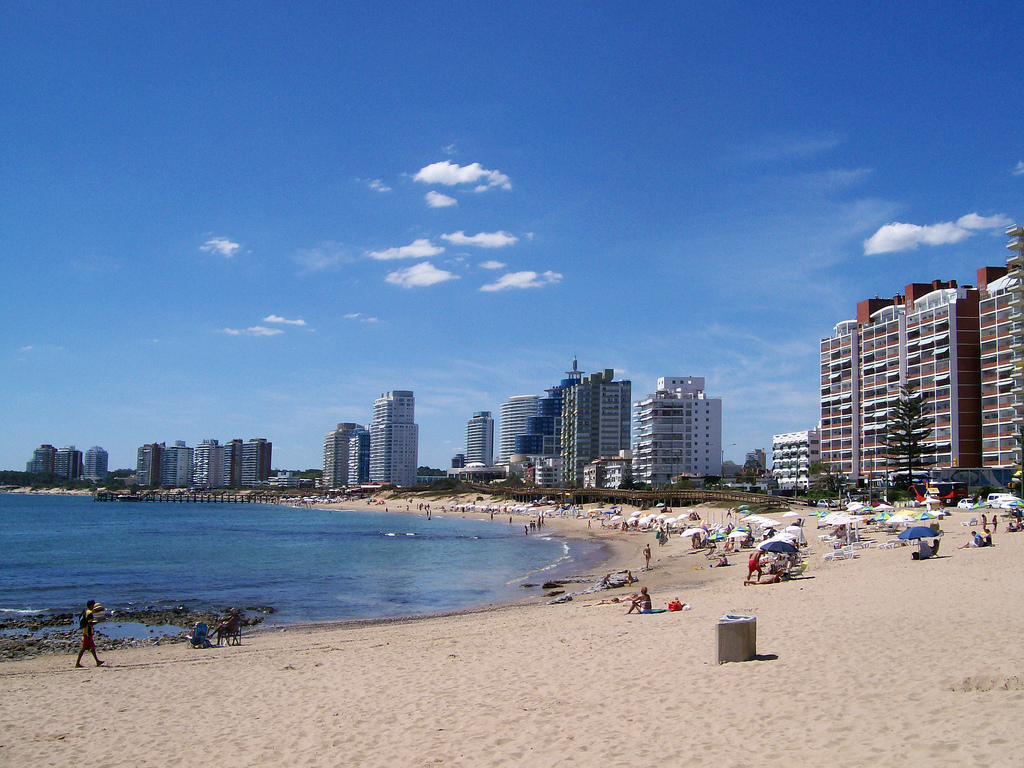
Beachside scenes on Punta del Este (Photo: Zhu via Flickr)
Punta del Este
Swaggering, carefree and forever fun, Punta del Este is South America’s favourite beach resort for the rich, famous and impossibly beautiful. Many models’ careers have been launched here (and a few wealthy businessmen’s ruined). Commonly labelled the Saint Tropez of South America, it also has the prices and snootiness to match, but away from the bar and club scene, there are plenty of down-to-earth restaurants and some lovely beaches too.
Despite its rather frivolous reputation, Punta del Este has an interesting history. It was here that Che Guevara famously berated American and regional leaders after the Day of the Pig’s debacle and it was also in Punta where the World Trade Organisation was formed in 1994. But it has always been at its most exciting during the summer season (Dec-Feb) when hordes of Argentineans, Brazilians and North Americans descend en masse in search of fun, carnality and the perfect selfie in front of a setting sun.
Where to Stay
Punta’s finest hotel also happens to be its greatest attraction. Located 10 miles to the west of the main peninsula, Casapueblo is a hotel-cum-art museum. This eccentric property is a surrealist´s dream, with white-washed turreted peaks and a labyrinth of 80 rooms spread over 13 floors. Known for its star-studded parties and bikini catwalks, the Hotel Conrad also happens to be Punta’s most emblematic hotel. It’s an enormous complex with a gym, a beauty centre, numerous conference halls, a casino and glass-fronted restaurants overlooking La Mansa beach.

A lighthouse in the fishing village of Jose Ignacio (Photo: Mark Pattern via Flickr)
Jose Ignacio
A former pirates’ hideaway, nowadays Jose Ignacio is a tiny fishing village made up of single-storey houses with thatched roofs rubbing shoulders with luxury condos equipped with ocean-facing infinity pools. It’s a must-visit for its brilliant white sand, beach-chic atmosphere and award-winning restaurants which are regularly frequented by international actors and tycoons. At the last count, Porsches outnumbered the flotilla by about ten to one – woe betide anyone turning up in an old banger.
There really is something for everyone to do here, from lounging around on a deckchair with a book and poolside cocktail to horse-riding, biking and hitting the surf.
Located on the sand dunes of José Ignacio is La Huella, Uruguay’s most famous restaurant (voted Best Restaurant in Uruguay 2017) and very much the central point of the resort. This fantastic restaurant – akin to a glorified beach shack – is a magnet for the rich, the beautiful, and even the occasional Hollywood star.
Where to Stay
The Posada del Faro is basically an extension of a family’s home so that it now includes 15 rooms. It’s rustic-chic in style, furnished with soft wooden floors, white-washed walls and large awnings draped around the sunning areas. Although there’s no official restaurant, they serve up a hearty all-day breakfast. Playa Vik sits in front of the beach. Features include fire pits, an impressive display of artwork and grass-roofed villas designed by starchitect Carlos Ott. The impressive swimming pool jutting out over the sea tops off a very pretty picture.
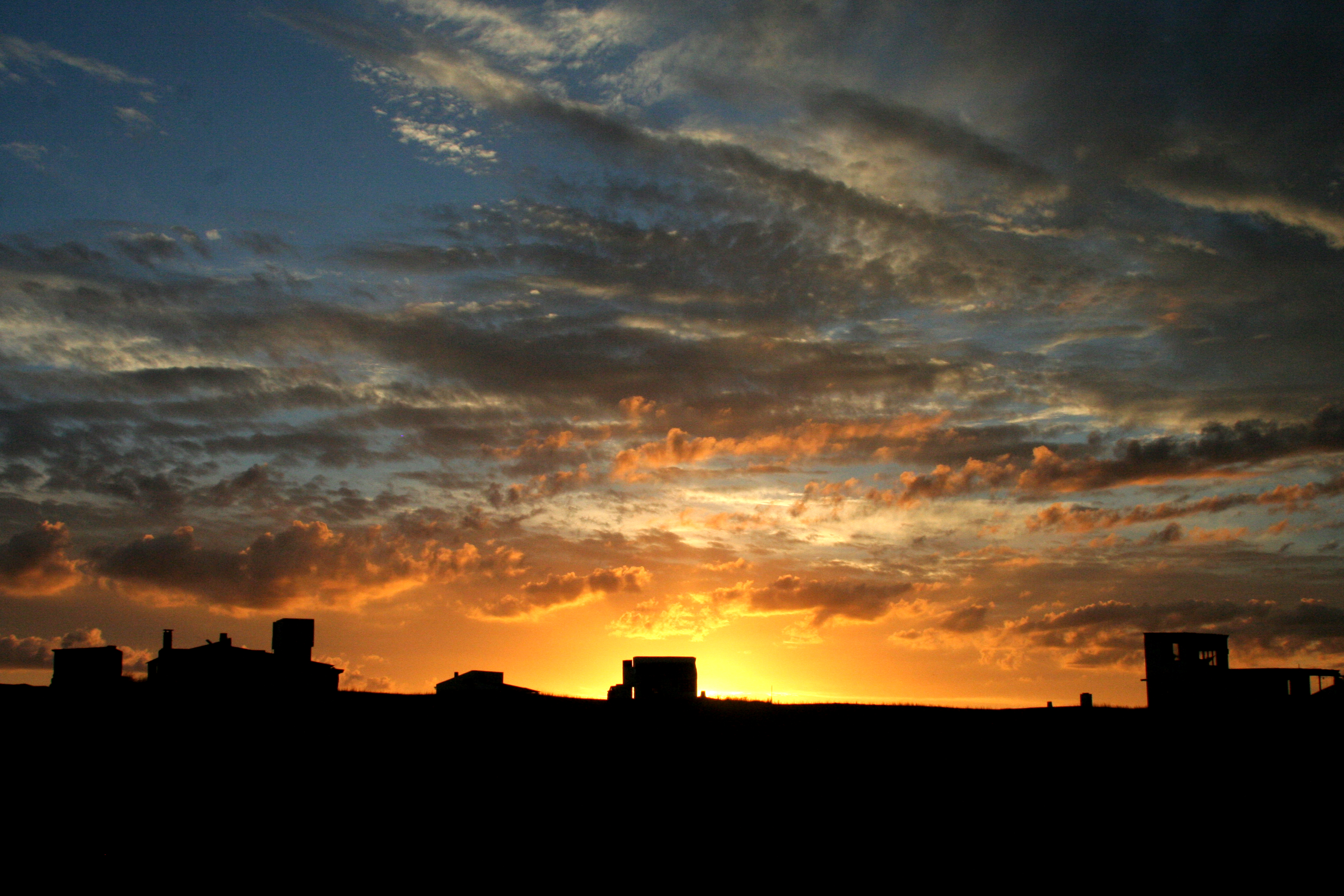
A shadowed view of the hamlet of Cabo Polonio (Photo: Tres Rosas Amarillas via Flickr)
Cabo Polonio
Impossible to forget and almost impossible to get to as well, this unique fishing village jutting out into the Atlantic Ocean is often cited as visitors’ favourite Uruguayan destination.
It’s a bit of an oddity in itself; for starters, the only way in and out of the resort is by hopping on one of the taxi-trucks operating between the main road and Cabo. Moreover, as part of a Nature Reserve, there’s no running water, no electricity and no boundaries between one property and the next.
But don’t let the lack of amenities put you off – instead, embrace them. No electricity means no noise, apart from the odd burst of laughter, the gentle hum of home generators and the whistling sea breeze.
Cooking often means a roast chicken over a fire or in a gas stove. A shower is usually a bucket of water pulled up from a well, or a quick dip in the sea. Indeed, Mother Nature reigns supreme here: ponies and frogs roam across the dunes while sea lions can be found sunbathing on the rocks.
Cabo is truly one of a kind.
Where to Stay
Accommodation options are limited to renting refurbished fishing huts, the odd hostel and a pair of small hotels on the beach front. Posada Mariemar is one of the few lodging options with running water and electricity. Although the rooms are a bit small, they all afford spectacular sea views. A little further out from the centre of Cabo Polonio, Posada de los Corvinos possesses three doubles and a large room with six bunk beds. A log fire comes into its own on chilly nights, while hammocks are laid out in the garden. Energy is sourced from the sun and vegetables come straight out of their organic garden.
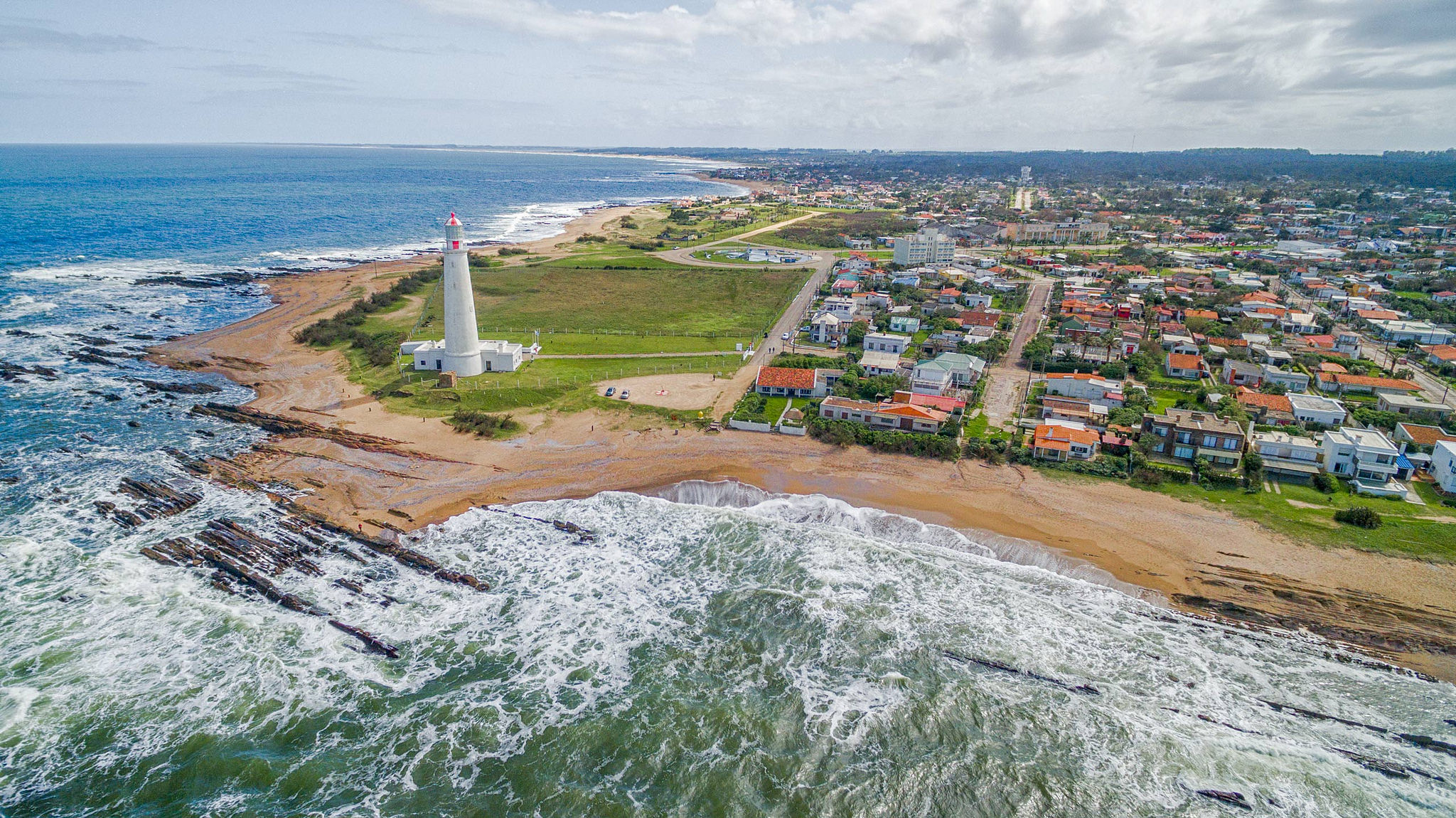
The seaide town of La Paloma (Photo: Marcelo Campi via Flickr)
La Paloma
While those looking for glamour should head to Punta del Este, for those in search of sea, sun and nature, there’s nothing quite like La Paloma. An 80-kilometre trip up the coast from Jose Ignacio, La Paloma has long since moved on from its reputation as a mere ‘fishing town’ to become one of the main holiday destinations of Rocha.
During the summer it attracts an eclectic crowd of mostly young people, from surfers to families, whose children can wander the streets freely without worry. These days, La Paloma has plenty of activities in and around the port, but it’s the beaches that remain the real star attraction.
La Aguada to the east and La Balconada to the west are the most popular beaches, the latter being where people flock to watch the sunset. Also nearby is the family-orientated beach referred to as ‘El Plato’ (the plate), while a three kilometre hike away lies Playa Anaconda, the preferred spot for the surfing fraternity.
Where to Stay
Hotel Portobello has ocean views over Playa Anaconda, a friendly service and a wonderful vibe, but like many hotels of this category in this part of the world, the facilities are a bit basic. There’s no A/C, no mini-bar and the rooms are small. You couldn’t get a more confusing name for a hotel in La Paloma, but everything else about the recently refurbished Hotel Palma de Mallorca is straightforward, from the wonderful family-style service to the 20-metre walk to the beach. Some of the 33 rooms can sleep up to six.
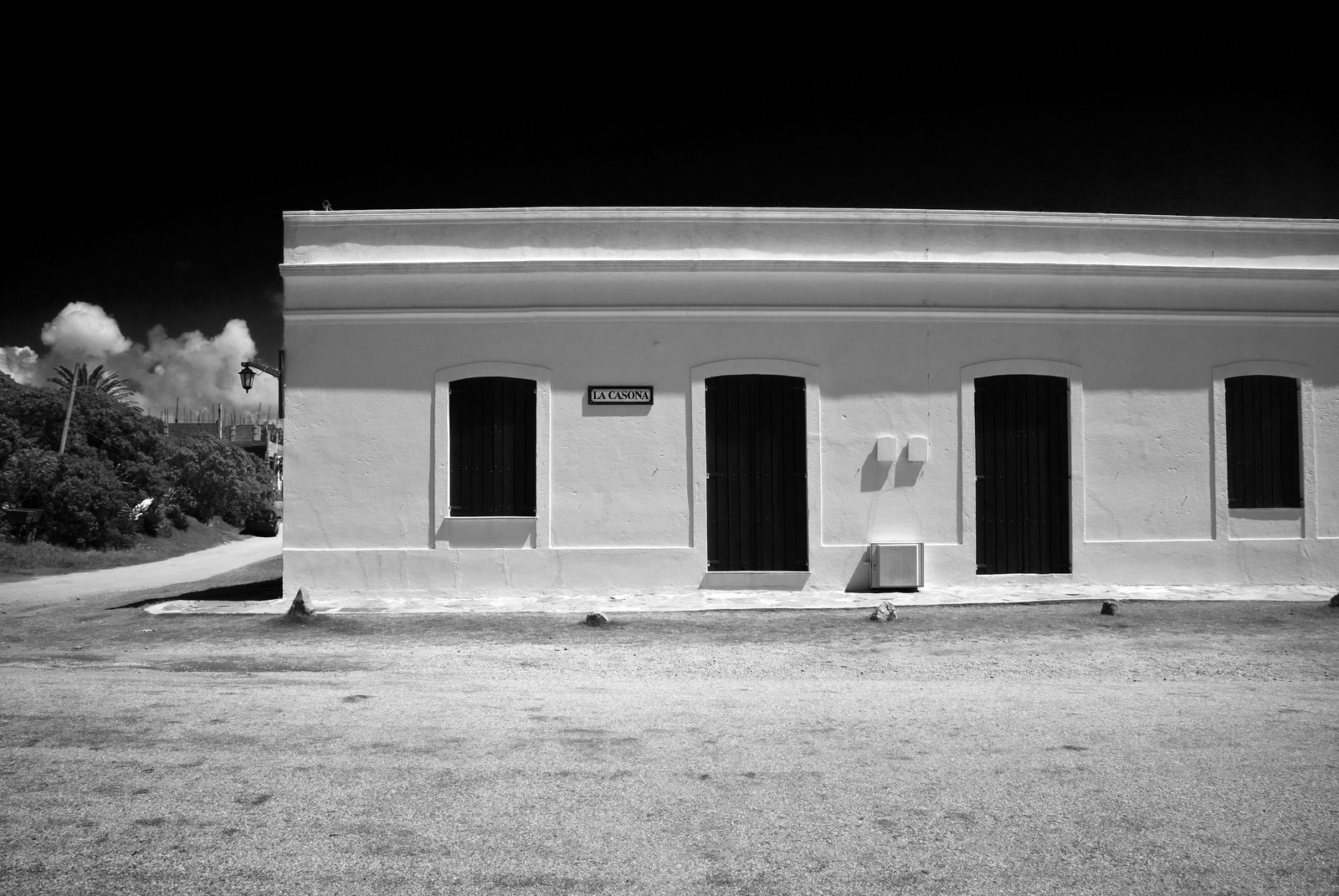
An atmospheric shot taken in the resort village of La Pedrera (Photo: Delpo via Flickr)
La Pedrera
Just seven kilometres away from La Paloma, La Pedrera is one of a handful of seaside resorts in this part of Uruguay to have become labelled ‘bohemian-chic’.
More affordable and a lot more down-to-earth than a lot of other resorts in the area, the main activities here are surfing, or just hanging out on the beach all day before indulging in a traditional asado (BBQ).
It’s a simple little town with a few ramshackle bars and restaurants serving fresh grilled seafood. But once the summer holidays arrive, the streets fill with sandy-haired teenagers and travelling artisans selling homemade art and crafts.
La Pedrera’s main beaches are the family-orientated Desplayado, Punta Rubia and Playa del Barco – the surfers preferred beach named after a large Chinese ship (Cathay VIII) which ran aground in the 1970s and, to this very day, sits in the middle of the beach.
If you happen to be there in mid-summer, La Pedrera Short Film Festival takes place during early January, with a multitude of international film-makers participating.
Where to Stay
Close to both the beach and the centre, the rather upscale Terrazas de la Pedrera has its own restaurant and swimming pool. Most of the rooms have fantastic ocean views and, for the odd rainy day, there’s even a pool table. The traditional, old-style Hotel La Pedrera counts both indoor and outdoor swimming pools and a tennis court among its many facilities. Originally built in 1941, a recent refurbishment has given the rooms a new spring of life. Standard rooms come with their own terrace looking onto the garden while superior ones have sea views.